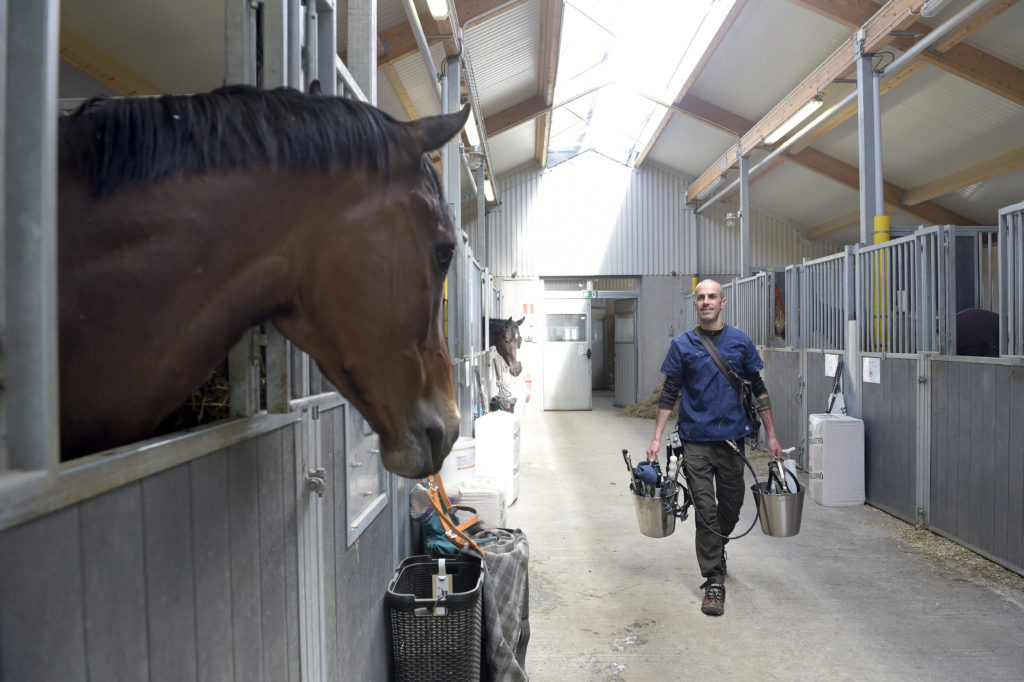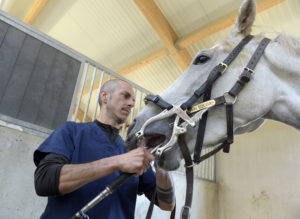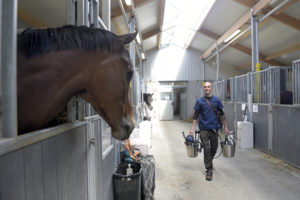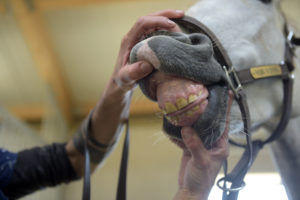On the day of my visit, I prefer if your horse has been in its box stall for a couple of hours by the time I arrive. In that way, the horse has had time to settle down. I prefer working in the horse’s own box stall, as this is where the horse tends to feel safe and comfortable.
I will start by asking some questions regarding the dental history of your horse, including if there are any eating or chewing problems, what the horse is like when ridden or driven, and about the general behaviour of your horse.
When meeting your four-legged friend, I will familiarise myself with him or her before starting the treatment. Whilst getting to know your horse I will also do an external check aimed to assess the general condition of the horse, its head shape, the lateral and forward/backward movement of the jaw, the condition of the incisors and the soft tissue between incisors and premolars where the bit sits. When doing this, I also see how the horse reacts to my actions.
The next step, after the mouth has been rinsed thoroughly, is to place a mouth speculum (gag) and open the horse’s mouth. A thorough examination is carried out in which I palpate all structures in the mouth and check the mouth with a head light.
I will then begin the actual treatment. I use modern tools in order to guarantee the best comfort for the patient. The treatment takes roughly 30 minutes.
After the treatment, the mouth will be examined again and the speculum will be removed. I will check the movement of the jaw again. The horse’s mouth will be rinsed again.
If you wish, I will record the treatment on a dental chart.
What I need on my visit to your stable is just water to fill up my bucket (warm water is highly appreciated in cold weather). And, maybe a cup of coffee 😉 (I am a big fan of kanelbullar too!).
Keep in mind that as an Equine Dental Technician, I can’t sedate your horse with any kind of sedative. In the absolute majority of cases, that is no problem at all. Usually, in every 100 horses that I treat, there will be 2 or 3 needing sedation. If you know that your horse is very difficult to handle, please make sure that a vet is called as well to provide a light sedation.
I look forward to meeting you!
Foto: Lars Jakobsson/Travronden





